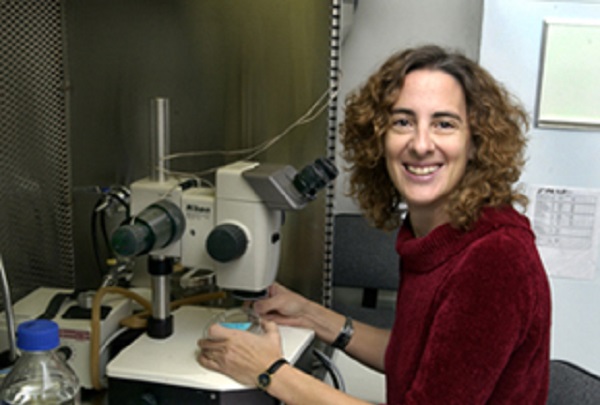In an article in the National Review, associate professor of neurobiology and anatomy at the University of Utah School of Medicine, Maureen L. Condic, argues that Planned Parenthood’s claim that we need aborted babies for life saving medical research is false. Condic mentions Nathalia Holt’s article in the New York Times, “The Case for Fetal-Cell Research,” which justifies fetal research by explaining that it has been used to find stem-cell therapies against cancer, Alzheimer’s, heart disease, blindness, diabetes and H.I.V.
However, Condic notes that Holt fails to mention a very important piece of information: the majority of those therapies have come from stem cells that are “isolated from birth-related material and/or adult tissue.” In other words, researchers are having great success with adult stem cells and other adult tissue, making fetal tissue research unnecessary.
Then, Condic tackles the claim that stem cell research is needed for developing vaccines. She writes, “Researchers in the 1960s and ’70s used fetal cells to produce transformed cell lines because, given the limited knowledge at the time, fetal cells were easier to propagate prior to transformation. Yet in the modern world, fetal cells are not required to produce transformed cell lines. Using current technology, adult cells are readily transformed in a similar manner and have identical properties to fetal-derived cell lines.”
CLICK LIKE IF YOU’RE PRO-LIFE!
She also says the only reason scientists still use “fetally derived, transformed cell lines” is for historic reasons. “These lines have been in use for more than 40 years, we know a great deal about their properties and have built a large number of “improvements” into them, which makes them valuable laboratory tools,” said Condic. This, in Condic’s view, doesn’t make “fetal tissue” lifesaving; instead, it is the vaccines that save lives.
Finally, she explains the difference between a “need” for fetal organs and a “market” for it. She writes, “People want and will pay good money for cigarettes, hallucinogenic drugs, salty, fat-laden snacks, and sappy romance novels — all things that they don’t “need” and that might, in fact, be harmful to them. Supplying such products cannot be ennobled by the pretense that they satisfy a basic “need” such as food or clean water. It is merely supplying a demand. It is capitalism, plain and simple.”
Thankfully, Holt doesn’t completely disagree with Condic on this and wrote in her New York Times piece that there is big money to be made in fetal tissue research. She said, “There are profits to be made by such middlemen in what critics call the abortion industry. A fetus runs upward of $850, not including testing, cleaning, or shipping charges, while a vial packed with pure stem cells can fetch more than $20,000.”
Here’s more from Condic’s article in the National Review:
A search of the NIH-administered database of clinical trials for the terms “fetal stem cell” returns only 21 currently funded human trials (only two of which actually involve transplantation of fetal stem cells), compared with 5,072 trials using non-fetal cells. Science has indeed spoken — but not in support of fetal-stem-cell research. Even more egregiously, Holt asserts: Fetal cells extracted from the lungs of two aborted fetuses from Europe in the 1960s are still being propagated in cell culture. They’re so successful that today we still use them to produce vaccines for hepatitis A, rubella, chickenpox and shingles. From two terminated pregnancies, countless lives have been spared.
The “fetal cells” Holt is apparently referencing are two cell lines derived from fetal lung tissue: WI-38 (isolated by Leonard Hayflick at the Wistar Institute in Philadelphia from a fetus aborted in Stockholm) and MRC-5 (isolated by Jacobs, Jones, and Baille at the National Institute for Medical Research in London). Both have been used extensively in vaccine development and production. Yet the use of WI-38 and MRC-5 for scientific and medical purposes in no way supports Holt’s conclusion.
Although these cells were initially isolated from aborted fetuses, they are categorically not fetal stem cells. Indeed, they are nothing like the cells she describes isolating directly from fetal tissue. WI-38 and MRC-5 are transformed cells lines, and the roles they have played in saving lives have absolutely nothing to do with their fetal origin. WI-38 and MRC-5 (along with two other fetal-derived cell lines, HEK-293 and IMR-90) are widely used in industry and research because they have been “immortalized,” which means that that they have been artificially transformed so that they divide indefinitely in culture. Immortalizing cells gives them many abnormal traits, allowing researchers to select for cells with useful properties that did not exist in the original fetal tissue. WI-38 and MRC-5 cell lines are useful for vaccine production not because of their fetal origin, but because they were selected for the ability to easily incorporate the “foreign” DNA required to make vaccines.








